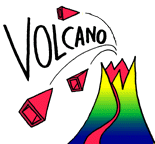 Volcano
Volcano
an Icehouse
game designed by Kristin
Looney
WHAT YOU NEED
|
WHAT YOU NEED |
| SETUP Using all of the pieces except the black ones, create 25 solid-color nests, and arrange them into a 5x5 square. (A "nest" consists of a large piece on top of a medium piece on top of a small piece.) Set aside the medium and large black pieces - they will not be used during the game. Place the five small black pieces on top of five nests, using one of the configurations shown here. (After a few games, you may want to try creating your own opening patterns.) |
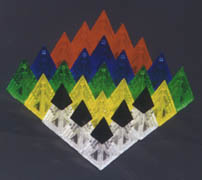 |
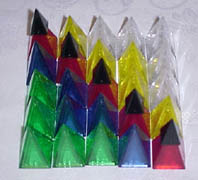 |
THE PLAY
Each stack of pieces within the 5x5 grid represents a volcano,
and the five small black pieces represent "caps" which
keep the volcanoes beneath them from erupting.
On your turn, you may move any one of the five caps in any direction (horizontally, vertically, or diagonally) for a distance of one space. You may not place a cap on top of another cap, and you may not move a cap outside of the 5x5 square. Any other move is legal.
Moving a cap may cause the underlying volcano (if there
is one) to erupt. If a move does not cause a volcano
to erupt, you are allowed to make another move with one of the
caps. You may continue to move caps in this fashion until
an eruption does occur, at which point your turn ends and play
passes to the player on your left.
|
ERUPTIONS
After you've finished executing the eruption, you may capture any erupting piece which has landed directly on top of a piece of the same size. Keep all of your captured pieces in front of you, to be tallied at the end of the game for your final score.
NON-ERUPTIONS During your turn, you may continue to move black caps until
you cause a volcano to erupt. With practice, you can learn
how to position the caps just so, in order to capture
the exact piece you're hoping for. SCORING
You're free to rearrange your captured pieces at any time during or after the game, in order to create the best possible score. ENDING THE GAME |
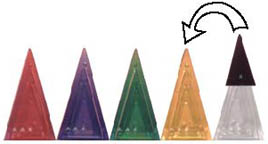
|
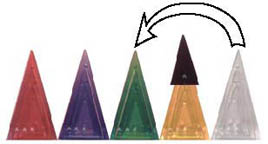
|
|
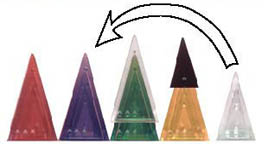
|
|
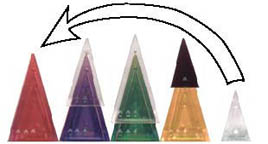
|
|
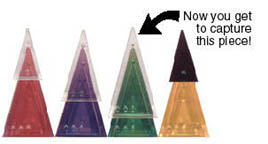
|
SOLITAIRE CHALLENGES
Volcano also makes for great fun as a solitaire activity.
(In fact, Kristin initially envisioned it as a solitaire game.)
Solitaire Volcano is more like a puzzle than a typical solitaire
game; the trick to these solitaire challenges lies in developing
your ability to move the black caps around, so that you'll be
able to take the specific piece(s) you desire. It may take a few
games, but once you get a perfect score you'll probably want to
tackle a new challenge (or find other players) rather than solve
the same puzzle again. These challenges make excellent training
for multi-player Volcano.
CREDITS